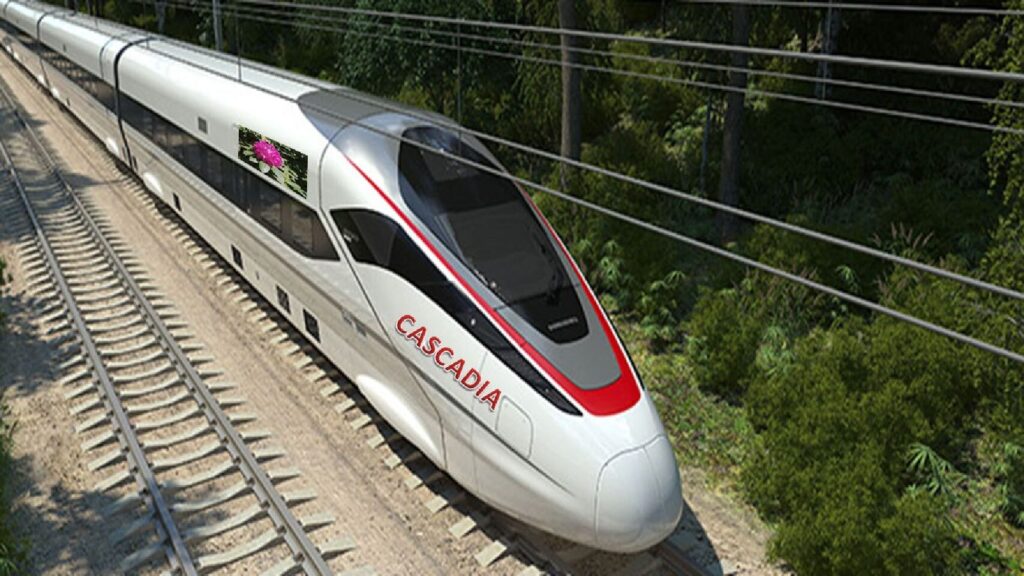
Sample of a Cascadia Electric-High-Speed Train Set
Cascadia High Speed Rail Company™ Leadership
Cascadia High Speed Rail Company™ has been led and developed by a team of experts in high-speed rail planning and its ancillary businesses. The team has taken a market-driven approach that considers the role that passenger, express parcel, and property development can play in providing a business that can effectively cover operating costs and the project’s capital costs.
Key team members are:
- Bradley C. Perkins is President and CEO of Cascadia High Speed Rail Company™ who has spent considerable time and resources influencing the direction of the newly designed CHSR corridor and transportation hub locations with local state and national leaders. He is a commercial real estate broker and has owned and operated Perkins Realty, a commercial real estate company, since 2004. He has amassed multiple properties for development, such as the Hollywood Library, New Seasons Headquarters, and Madrona Studios in Portland. Born in Portland, Perkins graduated from the University of Oregon in 1975 with a B.A. in Architecture and has facilitated the relocation/restoration of dozens of historic properties. He has been a leader in land use planning and developing environmental progressive transportation projects that inspire livable communities.
- Rudy Niederer is CHSR Company’s technical expert who has completed the concept plan for the electrified Cascadia High Speed Rail corridor system between Vancouver, BC and Eugene, OR. Niederer has designed the 413-mile corridor to avoid all grade crossings and effectively connect CHSR with all other transportation systems at the station stops. In 1996, Niederer designed the light rail concept plan for Honolulu, HI, known as Honolulu Area Rapid Transit (HART). From 1972 to 1990 he worked for Custodis Cottrell Company, headquartered in Chicago, IL as crew supervisor, traveling throughout the US to troubleshoot, construct and rehabilitate massive industrial chimneys. Born and educated in Switzerland, Niederer continues innovating, inventing, and designing solutions to complicated engineering and construction projects that are environmentally focused.
- Dr. Alexander Metcalf has been President of TEMS since 1989. Dr. Metcalf began his career in research at the Royal Institute of Public Administration in London, England, and became an economic advisor to the European Community for transportation policy and planning studies. He was Chairman of the European Freight Study and a member of the Technical Advisory Committee for the European Passenger Study. He was appointed Chief Economist at British Rail and London Transport and, upon privatization, Managing Director of Transecon International. Over his career, he has carried out major high-speed rail policy and planning studies for British Rail, SNCF, JNR, the World Bank, the Asian Development Bank, Transport Canada, and USDOT.
- Ankrom Moisan Architects creates places where people and communities thrive, with a particular emphasis on heightening livability in the urban environment. Much of their work is mixed-use, mid and high-rise residential projects with street-level retail. They understand that public transport like the Portland Streetcar is a vibrant combination for uses and density. They work closely with clients to foster easy access to bus and rail stops whenever possible. International connections with architects, educators, planners, developers and senior living entities in China, England, Mexico, Canada, Denmark, Sweden, and Germany make sense. Their success includes the design of North American headquarters for both Vestas and Daimler corporation. They are enthusiastically supportive of the Cascadia High-Speed Rail initiative. They see the benefits, sustainability, urban revitalization and connectivity that CHSR can bring to people and places.
